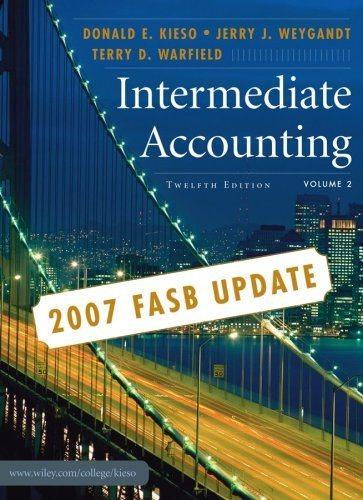(Warrants Issued with Bonds and Convertible Bonds) Incurring long-term debt with an arrangement whereby lenders receive an...
Question:
(Warrants Issued with Bonds and Convertible Bonds) Incurring long-term debt with an arrangement whereby lenders receive an option to buy common stock during all or a portion of the time the debt is outstanding is a frequent corporate financing practice. In some situations the result is achieved through the issuance of convertible bonds; in others, the debt instruments and the warrants to buy stock are separate.
Instructions
(a) (1) Describe the differences that exist in current accounting for original proceeds of the issuance of convertible bonds and of debt instruments with separate warrants to purchase common stock.
(2) Discuss the underlying rationale for the differences described in (a)1 above.
(3) Summarize the arguments that have been presented in favor of accounting for convertible bonds in the same manner as accounting for debt with separate warrants.
(b) At the start of the year Biron Company issued $18,000,000 of 12% bonds along with warrants to buy 1,200,000 shares of its $10 par value common stock at $18 per share. The bonds mature over the next 10 years, starting one year from date of issuance, with annual maturities of $1,800,000.
At the time, Biron had 9,600,000 shares of common stock outstanding, and the market price was
$23 per share. The company received $20,040,000 for the bonds and the warrants. For Biron Company, 12% was a relatively low borrowing rate. If offered alone, at this time, the bonds would have been issued at a 22% discount. Prepare the journal entry (or entries) for the issuance of the bonds and warrants for the cash consideration received.
Step by Step Answer:

Intermediate Accounting 2007 FASB Update Volume 2
ISBN: 9780470128763
12th Edition
Authors: Donald E. Kieso, Jerry J. Weygandt, Terry D. Warfield





